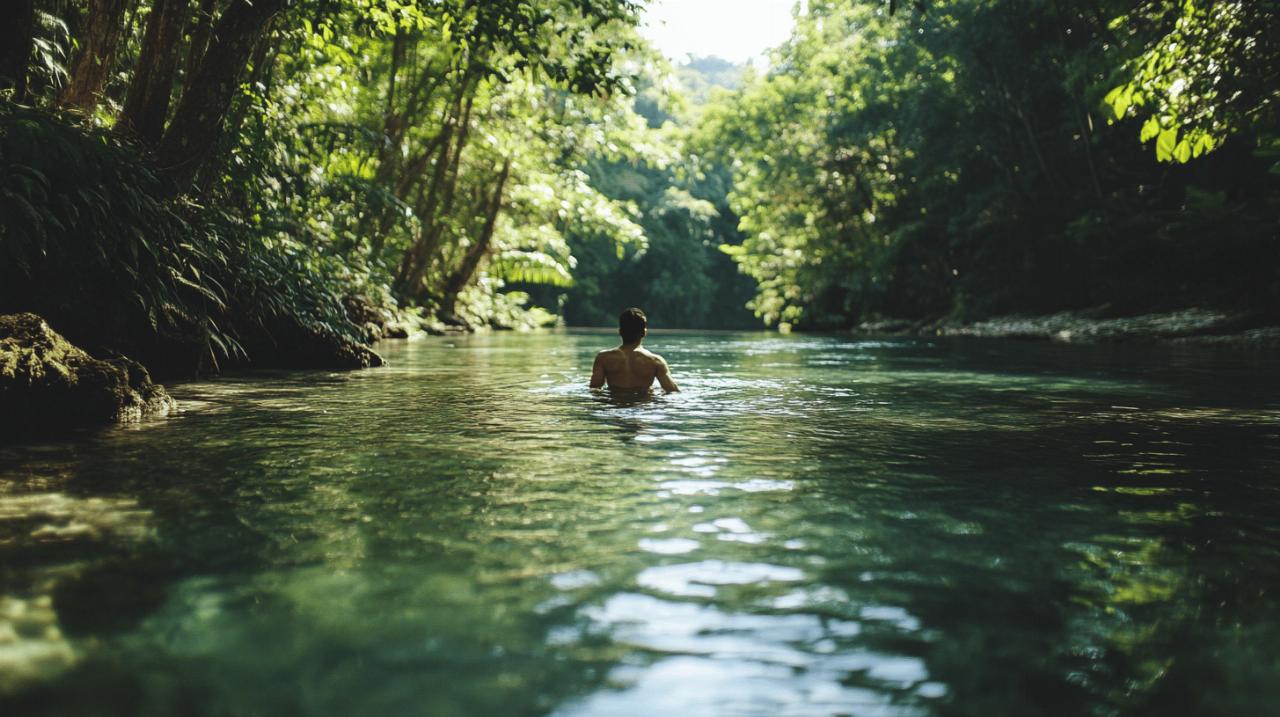Cold Baths: Health Benefits and Risks Explored – From Morning Showers to Wild Swimming

Understanding cold water immersion
Cold water therapy has been both feared and revered throughout human history, with practices ranging from outdoor swimming in natural bodies of water to controlled ice baths and cold showers. These practices involve deliberate exposure to water temperatures typically ranging from 0-15°C, depending on the setting and purpose. The growing popularity of cold water immersion has sparked interest among wellness enthusiasts, athletes, and medical professionals alike, all keen to understand its potential effects on physical and mental wellbeing.
The science behind the body's response to cold
When we immerse ourselves in cold water, our body initiates several immediate physiological responses. The initial contact triggers what scientists call the 'cold shock response', characterised by involuntary gasping, hyperventilation, and increased heart rate. Simultaneously, the 'diving response' kicks in, causing bradycardia (slowed heart rate) and vasoconstriction (narrowing of blood vessels). These competing mechanisms represent our body's sophisticated attempt to maintain core temperature and protect vital organs. Temperature regulation occurs through several mechanisms: vasoconstriction reduces blood flow to the skin, shivering generates heat through muscle activity, and non-shivering thermogenesis activates brown adipose tissue to produce heat without muscle movement.
Different forms of cold water therapy
Cold water therapy manifests in various forms, each with distinct characteristics and levels of intensity. Ice baths involve controlled immersion in water between 10-15°C, typically for around 10 minutes, and are favoured by athletes seeking recovery benefits. Cold showers offer a more accessible daily practice with adjustable temperature and exposure time. Wild or outdoor swimming in natural water bodies presents a more unpredictable experience, with UK water temperatures ranging from a relatively mild 10-28°C during summer months to a challenging 0-7°C in winter. The controlled environment of showers and ice baths reduces certain risks compared to wild swimming, though all forms require appropriate precautions and gradual acclimatisation for safety.
Circulation and recovery benefits
One of the most celebrated aspects of cold water immersion is its effect on circulation. The body's natural response to cold exposure is to redirect blood flow away from the extremities and towards the core to preserve heat. When you eventually warm up after cold exposure, this process reverses dramatically, creating what enthusiasts describe as a 'flush' of enhanced circulation throughout the body. This circulatory boost delivers fresh oxygen and nutrients to tissues while more efficiently removing metabolic waste products.
How cold exposure boosts blood flow
The mechanism behind improved circulation involves a fascinating process known as the Lewis hunting reaction. When extremities are exposed to cold, the body alternates between vasoconstriction and vasodilation in a rhythmic pattern. This natural oscillation helps prevent tissue damage while maintaining some level of blood flow to the affected areas. Skin blood perfusion is controlled primarily by the sympathetic nervous system, with specialised arteriovenous anastomoses in the extremities playing a crucial role in regulating heat exchange. The enhanced circulation resulting from cold exposure may contribute to improvements in cardiovascular health markers observed in cold-adapted individuals, though researchers caution that cold immersion initially increases cardiac workload and blood pressure before adaptation occurs.
Athletic recovery and muscle repair
Athletes across various disciplines have incorporated cold water therapy into their recovery regimens, typically immersing themselves in 10-15°C water for approximately 10 minutes after intense training. The potential benefits for recovery stem from several mechanisms: reduced inflammation in worked muscles, constriction of blood vessels that may limit swelling, and temporary numbing that provides pain relief. Some studies suggest that cold water immersion can improve subsequent sprint speed and reduce markers of muscle damage after strenuous exercise. However, research findings remain mixed, with a 2014 study suggesting that some perceived benefits might be attributed to placebo effects rather than physiological changes. The context and timing of cold exposure appear crucial, as some evidence indicates that cold therapy might be more beneficial for recovery between same-day training sessions than for long-term adaptation.
Immune system enhancement
 Regular practitioners of cold water immersion often report fewer common illnesses, leading researchers to investigate potential connections between cold exposure and immune function. The relationship appears complex, with both immediate responses and potential long-term adaptations that might influence overall immunity. When the body experiences cold stress, it responds with a cascade of physiological changes that may temporarily activate certain immune parameters.
Regular practitioners of cold water immersion often report fewer common illnesses, leading researchers to investigate potential connections between cold exposure and immune function. The relationship appears complex, with both immediate responses and potential long-term adaptations that might influence overall immunity. When the body experiences cold stress, it responds with a cascade of physiological changes that may temporarily activate certain immune parameters.
White blood cell production and cold exposure
Cold water immersion triggers measurable changes in immune system markers, including increased levels of interleukin-6 (IL-6) and alterations in white blood cell counts. These changes indicate immune system activation in response to the stress of cold exposure. The body's release of catecholamines during cold immersion affects various immune parameters and oxidative stress markers. This stress-induced activation might represent what some researchers describe as 'body hardening' – a process through which controlled exposure to physical stressors potentially enhances the body's resilience to subsequent challenges. While these acute changes are well-documented, their translation into meaningful immune protection requires further investigation to fully understand.
Long-term immunity benefits of regular practice
The question of whether repeated cold water immersion leads to lasting improvements in immune function remains partly unanswered. Some studies suggest that regular cold exposure may condition the immune system, potentially resulting in more efficient responses to pathogens. This adaptation might explain anecdotal reports from winter swimmers who claim reduced susceptibility to common infections. However, researchers emphasise that evidence specifically linking cold water immersion to enhanced long-term immunity remains limited. The observed immune effects might also be influenced by other factors often associated with cold water immersion practices, such as regular physical activity, exposure to natural environments, and social connections formed within cold water swimming communities.
Safety considerations and best practices
While cold water therapy offers potential benefits, it also presents significant risks that require careful consideration. The initial shock of cold immersion places substantial stress on the cardiovascular system, causing rapid increases in heart rate and blood pressure that may be dangerous for individuals with pre-existing heart conditions. The body's cold shock response can trigger involuntary gasping and hyperventilation, increasing the risk of water inhalation and drowning, particularly in uncontrolled environments like open water.
Health risks and contraindications
Certain health conditions substantially increase the risks associated with cold water immersion. People with cardiovascular issues, including hypertension, arrhythmias, and heart disease, face elevated risks of adverse events due to the sudden cardiovascular stress. Extended exposure can lead to hypothermia, where core body temperature drops below safe levels, potentially causing confusion, impaired coordination, and in severe cases, loss of consciousness. A less recognised but serious concern is non-freezing cold injury, which can cause lasting nerve and blood vessel damage, resulting in chronic pain and cold sensitivity. Research indicates that individuals with African and Caribbean backgrounds may have increased susceptibility to non-freezing cold injuries, highlighting the importance of considering individual factors when assessing risks. Excessive cold water immersion can also have negative effects on recovery and adaptation in some contexts, underscoring the importance of moderation.
Getting started safely with cold water therapy
For those interested in exploring cold water therapy, a gradual, informed approach is essential. Consulting with a healthcare provider before beginning is crucial, especially for those with underlying health conditions. When preparing for cold water immersion, never go alone, and ensure the water source is safe and appropriate. Having a clear plan for entry and exit from the water reduces risks, as does preparing warm clothes and hot drinks for the recovery period afterward. Start with brief exposures and gradually increase duration as your body adapts, always remaining attentive to your body's signals and exiting the water before experiencing numbness, pain, or shivering. For wild swimming specifically, additional safety measures include wearing a bright hat for visibility, using a float for support, knowing hand signals to indicate distress, and selecting swimming locations with appropriate safety features. The key to safe practice lies in respect for the power of cold water, gradual acclimatisation, and consistent attention to safety protocols.

